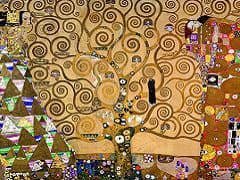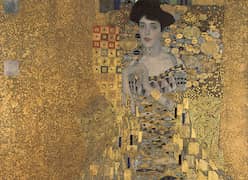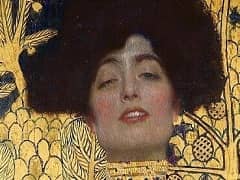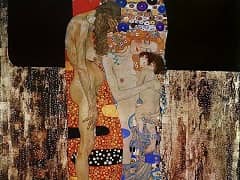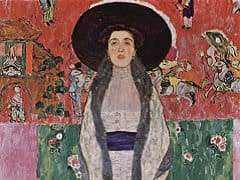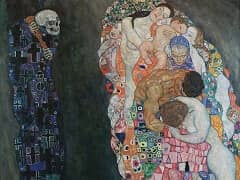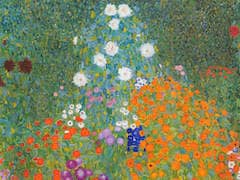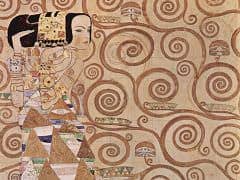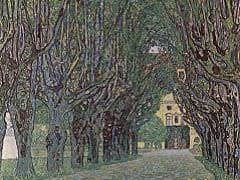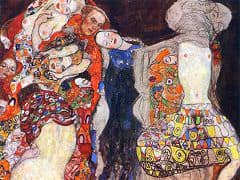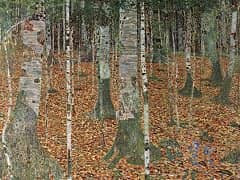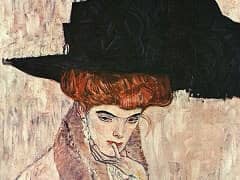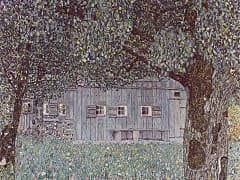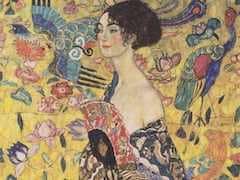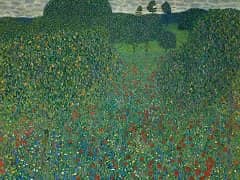Portrait of Serena Lederer, 1901 by Gustav Klimt
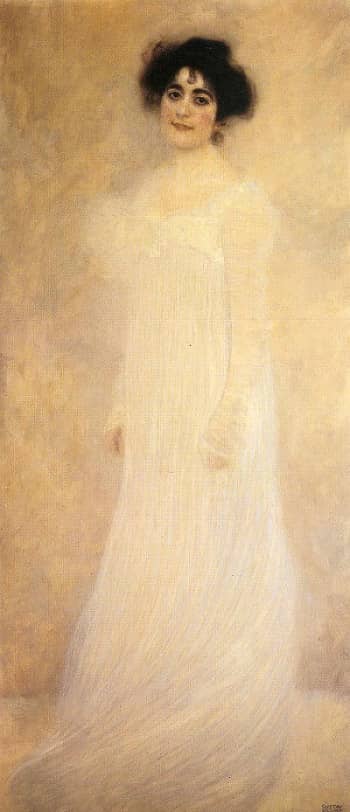
No doubt encouraged by the success of Klimt's Portrait of Serena Lederer commissioned a portrait of herself. The painting's narrow format is like that of the central panel of the Hofburg Actor Josef Lewinsky as Carlos, although it does not have the wide frame of the earlier work.
The portrait is chiefly remarkable, however, for its similarity to works by Whistler. Until he went to London in 1906, Klimt would only have seen Whistler's work in black and white reproductions, yet the two paintings are very close in terms of composition, colouring and technique. Klimt uses white for the subject and background so that the figure is both distinct from her surroundings and dissolves into them. As in Whistler's painting, the darkest elements in Klimt's work are the girl's hair, eyebrows, eyes and mouth - an emphasis that is obviously erotic.
The Lederers amassed quantities of Klimt's work, buying paintings and numerous drawings. They also commissioned a painting of their daughter, Baroness Elisabeth Bachofen-Echt. At an exhibition of 200 drawings organized shortly after Klimt's death, Serena Lederer arrived demanding how much the entire show cost. She bought the whole lot. The Lederer collection of Klimt's works was ill-fated. When Austria was annexed by Germany in 1938, the entire collection - save the family portraits - was confiscated. Many of the paintings, including Schubert at the Piano, were taken to the Schloss Immendorf, where they perished in a fire in 1945. Serena Lederer had taken drawing lessons under Klimt and her son Erich was taught by Egon Schiele. His patronage later helped Schiele enormously.


